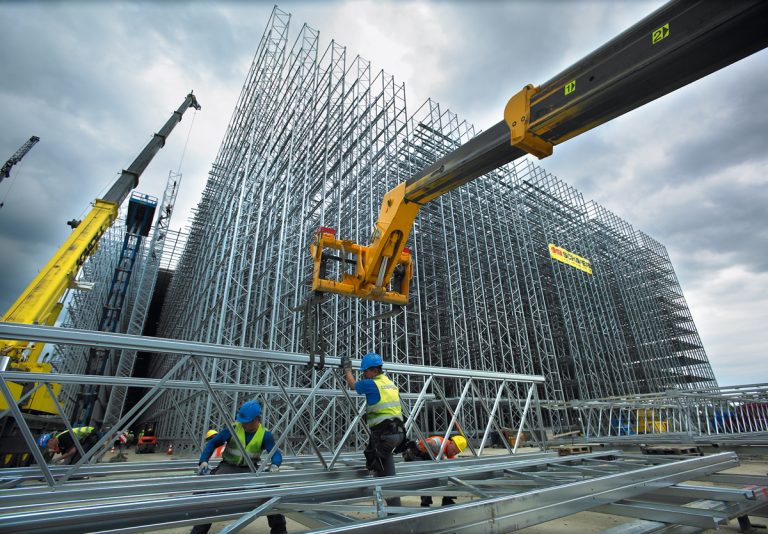There’s no question that the pandemic has dramatically changed the way we live and work, and the impact it has had on different industries has been monumental. Supply chains are just one factor in this equation, however, they’re crucial to the success of many global enterprises. As supply chains become increasingly disrupted, it’s important to have a risk management protocol in place so that your business remains functional. If you own a business that relies on international product shipments or industrial supplies, keep reading to learn how you can prepare for a potential supply chain disruption. What Disrupts a Supply Chain? Before the pandemic, supply chains still faced disruption and shortages, hindering both international and local businesses. Things such as natural weather disasters, environmental concerns, human error and labour shortages all played a factor. Financial concerns also cause supply chain issues, with suppliers experiencing unexpected changes in funding which can upset their processes. Changes in regulatory environments and sociopolitical concerns are also huge risks to supply chains—a major concern for people on a global scale. While some of these things are within our control and could be addressed fairly quickly, many of them are not within our control: for example, a global pandemic. A global pandemic created unprecedented labour shortages as people who were required to complete manual labour tasks either became ill or were forced to stay home for their own safety. On top of labour shortages, an increase in demand sent many businesses in a tailspin trying to keep up with new consumer spending habits, as people increasingly shopped online or ordered products in bulk. Many businesses are still recovering from this upset, and it could take a while before things go back to any semblance of normalcy. Common Strategies to Mitigate Risk There is no way that your business will not be impacted by supply chain issues at some point or another, so you must have a risk management protocol on hand. Once you’re aware of the risks that could cause a supply chain to experience disruptions, you’re able to consider which ones are most related to you and your business. For example, if you rely on materials from a company that you know is located in a country that experiences common environmental concerns, it would be best to focus on strategies that align with those issues. It might take some research on your part before you begin creating strategies so you’re able to make educational choices. The best way to approach supply chain risk management is by looking at prevention, preparedness, response, and recovery. Prevention In this step, you’ll want to think about all the different ways you can be proactive about supply chain risks. This includes conducting research about your industry and staying on top of the latest news—if anything seems like it could have the potential to be damaging, you’ll know to keep your eye on it. Which of your operations are the most vulnerable to a supply chain disruption? Are you dealing with rare, difficult to find products or materials? Was there a recent election in a country that you deal with on a regular basis? These are all things that you’ll want to think about so you can make adjustments or change course before you’re forced to. Prepare It’s always important to have a backup plan in case a Plan A doesn’t follow through. Even if you feel that your business is rock solid, something could always come up and set you into a tailspin. In this case, build relationships with local suppliers of similar products to set up alternatives in case something falls through. Also, set up tracking data if you can so that you receive alerts ahead of time that there are delays. You can even ask providers to give you insight into their risk management protocols so you can align with their ideas. Response So you’ve gone through some preventative measures and you’ve thought about how you’ll prepare. But now it’s time to walk through how you’ll actually respond to a crisis. Counteracting risk by having a chain of command set up in times of crisis is imperative. This means practicing or running drills with a polished plan to ensure it’s air-tight. Establish a clear and easy line of communication between you, your employees, and your distributors to make sure everybody is on the same page. One of the only things that can make a crisis worse is having a confusing, unplanned response. Recovery After you’ve responded to a crisis, it’s important to look at what you could have done better or what you did right. Conduct an audit of your mock response tactics and see what worked and what might be a red flag. The recovery period is just as crucial to your risk management protocol because it helps maintain all the hard work you put into responding to a crisis. This can include consistent monitoring to make sure everything is in order, swapping out distributors, and asking your team what could have been done differently. Be Proactive and Catch Issues Before They Occur No matter what industry you’re in, there will also be unknown factors disrupting processes. Preparing for the unknown is practically impossible, but there are steps that you can take outside of continuously having to play defense. Risk management strategies are great, but what’s even better is performing an audit and finding ways your company can improve even before a crisis hits. Do you solely rely on international companies to supply you with industrial equipment, and can you maybe look for industrial suppliers in Canada? Consider the way you communicate with distributors—do you have a good connection with them and are they trustworthy? The old adage that “a best defense is a good offense” rings true when it comes to managing supply chain disruptions. Sometimes, it’s not how you react, it’s how you prepare. Protect Your Business and Mitigate Risk Supply chains have always been complex and disruptions happen, so it’s important to keep









